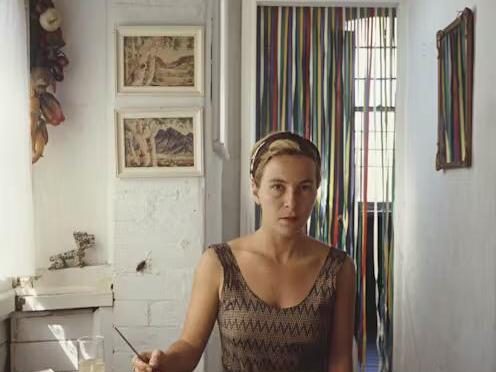Physical Address
304 North Cardinal St.
Dorchester Center, MA 02124
Physical Address
304 North Cardinal St.
Dorchester Center, MA 02124

The first artwork I encountered by Australian photo-media artist Anne Zahalka was her reinterpretation of Tom Roberts’ “A Break Away!” (1891). In Zahalka’s 1985 version, the heroic rider is reimagined with a plait, part of her series “The Landscape Re-presented,” where she used photomontage to create a more gender-inclusive and multicultural depiction of Australia.
This innovative body of work earned Zahalka a year-long residency at Berlin’s Künstlerhaus Bethanien in 1986, courtesy of the Australia Council. Berlin’s rich art scene and historical significance opened Zahalka’s eyes to her European heritage, a revelation for this child of refugees.
The result of her Berlin experience was “Resemblance,” comprised of large-format Cibachrome photographs that honour the art she encountered there. Most works evoke sentiment rather than specific art pieces, and the true hero of these photographs is the light that sharply defines the objects, lending them identity.
Among these works is “Marriage of Convenience (Graham Budgett and Jane Mulfinger),” a modern take on “The Arnolfini Portrait,” the revolutionary 15th-century painting. Zahalka even includes a reflection of herself in the painting, paying homage to the way Jan Van Eyck inserted himself into the original.
Upon returning to Australia, Zahalka began experimenting with digital photography, initially manipulating elements from her Berlin works. Living in Bondi, she started rethinking the iconic beach’s image as a symbol of bronzed Anglo-Australia, reflecting its multicultural reality instead.
Her series “Bondi: Playground of the Pacific” presented the beach in a multicultural light, capturing the diversity and vibrancy of Bondi’s visitors, from tanned beach inspectors to Japanese surfers. This multicultural theme continued in her “Welcome to Sydney” series, commissioned by the international airport, featuring an Orthodox Jewish rabbi and his family on Bondi Beach.
Zahalka values the many residencies that have enabled her to create extensive series of works. “Hotel Suite” (2008) resulted from a residency at Melbourne’s Hotel Sofitel, inspired by the transient nature of hotel life. The series presents implied narratives, from a half-clad prepubescent girl on a bed to a maid engrossed in a book.
One striking photograph features a suited man holding his head in grief, reminiscent of John Brack’s “Collins St, 5pm” (1955), which hangs in the background. The man is Zahalka’s husband, reacting to his team’s loss in a football game – a quintessentially Melbourne moment.
A visit to New York’s Museum of Natural History inspired another direction in Zahalka’s work. She recalled Holden Caulfield’s admiration for the static dioramas in J.D. Salinger’s “The Catcher in the Rye.” Zahalka has since photographed and manipulated images from natural history museums, highlighting the contrast between the idealized past and the present ecological crisis.
Her series highlights the ongoing destruction of nature and serves as a stark warning. Zahalka’s images juxtapose idealized natural scenes with the harsh realities of rising sea levels and environmental damage from practices like fracking.
Particularly powerful are her photographs of the Lord Howe Island diorama at the Australian Museum, where she contrasts the pristine, monochrome scene with the colorful pollution harming bird life. A nearby display showcases a taxidermied bird dissected to reveal ingested plastics, underscoring the dire consequences of human activity.
The latest exhibition at the National Art School Gallery, titled “ZAHALKAWORLD – an artist’s archive,” builds on a previous display at the Museum of Australian Photography. Central to this exhibition is a room replicating Zahalka’s “Kunstkammer,” an archival record of her works, complete with a miniature model of the room itself. This exhibit underscores the importance of recording both past and present, as today’s events will soon become part of history.
ZAHALKAWORLD – an artist’s archive is at the National Art School Gallery, Sydney, until October 19.
Joanna Mendelssohn has in the past received funding from the Australian Research Council.
Source: The Conversation



